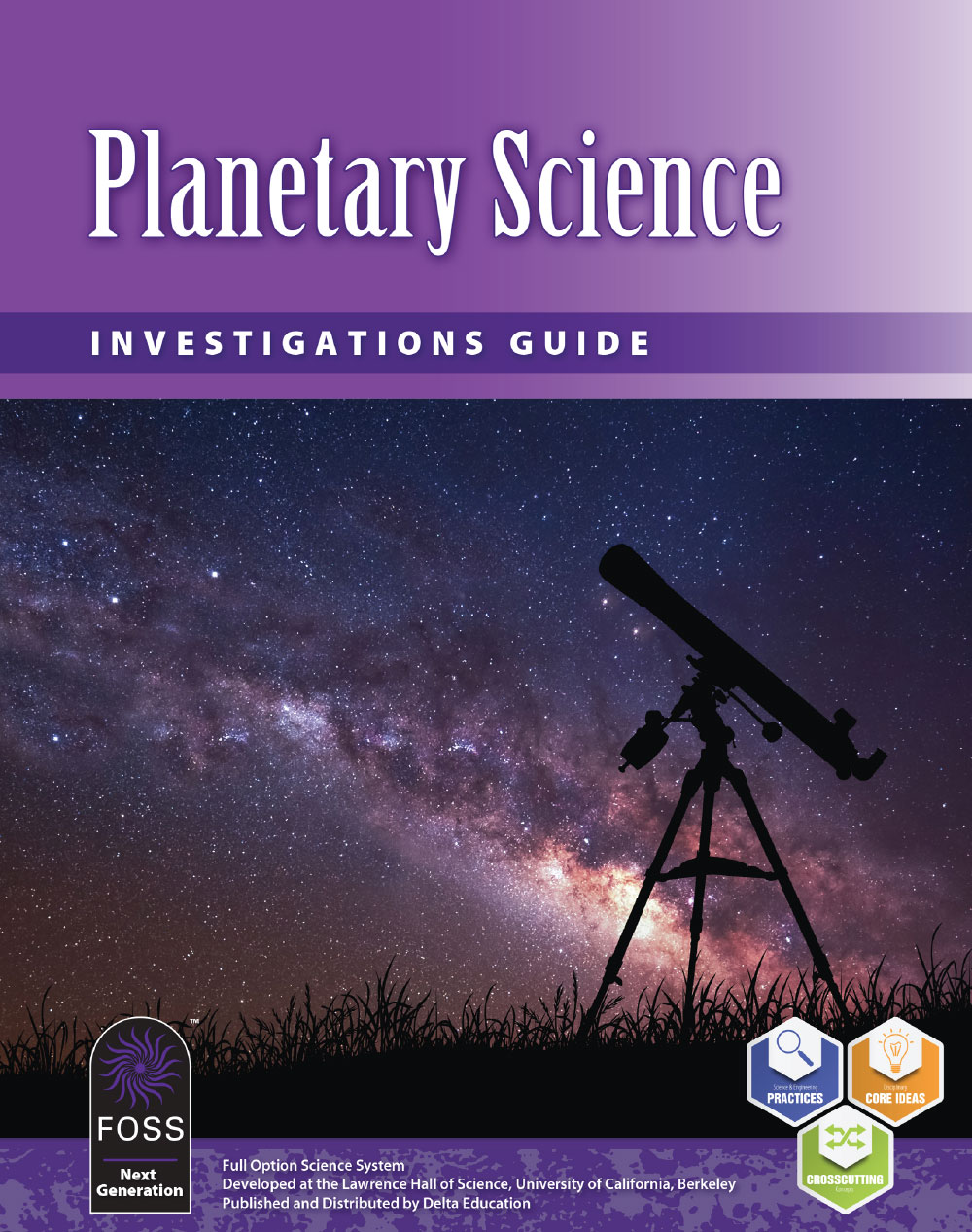FOSS Next Generation Planetary Science
Grades 8

The Planetary Science Course develops a historical sense of humankind’s exploration of the cosmos and then delves in far greater depth into the modern questions surrounding space exploration. Students develop a thorough understanding of the local cosmos—including the organization of the solar system and the reason for the seasons—before turning their study to the top planetary science headlines of our times: the NASA Kepler Mission and the hunt for exoplanets.
Investigation 1: Earth as a System
Develop a sense of planet Earth as a base from which to launch into the vast reaches of the solar system and beyond.
Investigation 2: Earth/Sun Relationship
Apply knowledge of Earth’s tilt and the revolution of Earth around the Sun to explain daylight length and seasons.
Investigation 3: Moon Study
Study the surface features of the Moon and the size and distance of our closest celestial neighbor.
Investigation 4: Phases of the Moon
Analyze data to identify the pattern of Moon phases and then develop a physical model that can explain Moon phases.
Investigation 5: Craters
Explore lunar impact craters and use Moon data to determine the number and frequency of major impacts on Earth.
Investigation 6: Beyond the Moon
Explore lunar impact craters and use Moon data to determine the number and frequency of major impacts on Earth.
Investigation 7: The Solar System
Explore the scale of the solar system by making physical and graphical models.
Investigation 8: Space Exploration
Introduce a tool used to study distant objects in planetary systems—the spectroscope.
Investigation 9: Orbits and New Worlds
Study and apply techniques used to search for planets and planetary systems around other stars in the Milky Way.